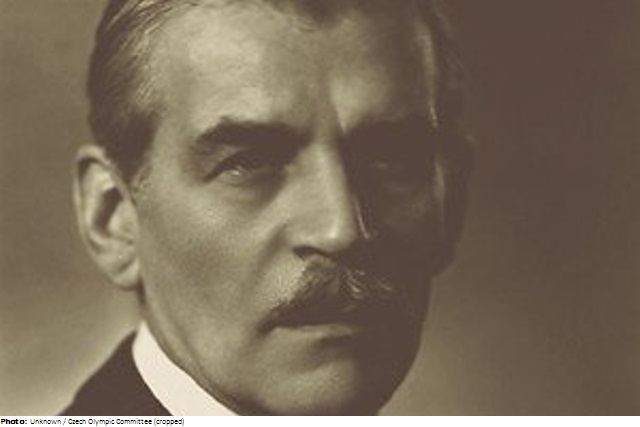Jakub Obrovský was supported as a child by his mother and began to study at the age of 15 at the Applied Arts School, then studied from 1901-05 at the Academy of Fine Arts, both in Prague. In 1908 he took orders for decoration works like the mosaic for the dining hall at the Representation House at Prague and some other fresco works. From 1911-13 he started oil painting, especially with gypsy motifs. In 1919 Obrovský became a professor at the Academy of Fine Arts in Prague and from 1935-37 was its principal. His sculptural works began only in 1923, although he was interested in this discipline since his early youth. He mainly created sport motifs, female nudes, and antique figures, which he created primarily from marble and bronze. Despite his Olympic medal in 1932, he was a member of the “French Committee against the Execution of the Olympic Games at Berlin 1936” and refused to participate.
The bronze The Javelin Thrower (Vrhač oštěpu) was created at the end of 1923. Today, the medal-winning statue Odysseus stands in the garden of the Sternberg Palace in Praha (Prague). The version sent to the Los Angeles Olympics was 90 cm high, its life-size copy 212 cm. The idea for the work emerged immediately after the First World War. However, the sculpture was not completed until 1932. The actual title was Vraždící Odysseus (Murdering Odysseus). It represents the Greek hero fighting against the suitors on his return to Ithaka. To emphasize the sport motif, it was supposed to be submitted as a Javelin Thrower. Eventually, it was simply called Odysseus in the catalog.
Volleyball appears in Czech sources as Girl Plays Volleyball (Dívka hrající volejbal). It is probably the bronze figure Girl with Ball (Dívka s míčem). The 50 cm high statuette Victory (Vítěz) was created in 1923. However, there is another statue dated 1933 with the title Vítězi! representing the goddess of victory that was actually to be shown in Berlin, but Obrovský refused to take part. The entry Runner (Běžec) could well be the bronze statue Runner after the Start (Běžec po startu).

 Czechoslovakia
Czechoslovakia TCH
TCH TCH
TCH TCH
TCH